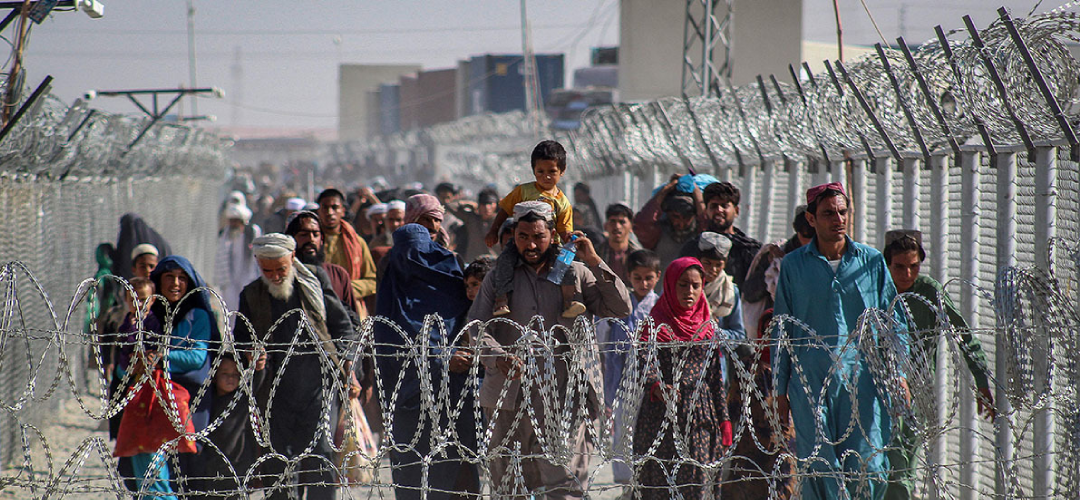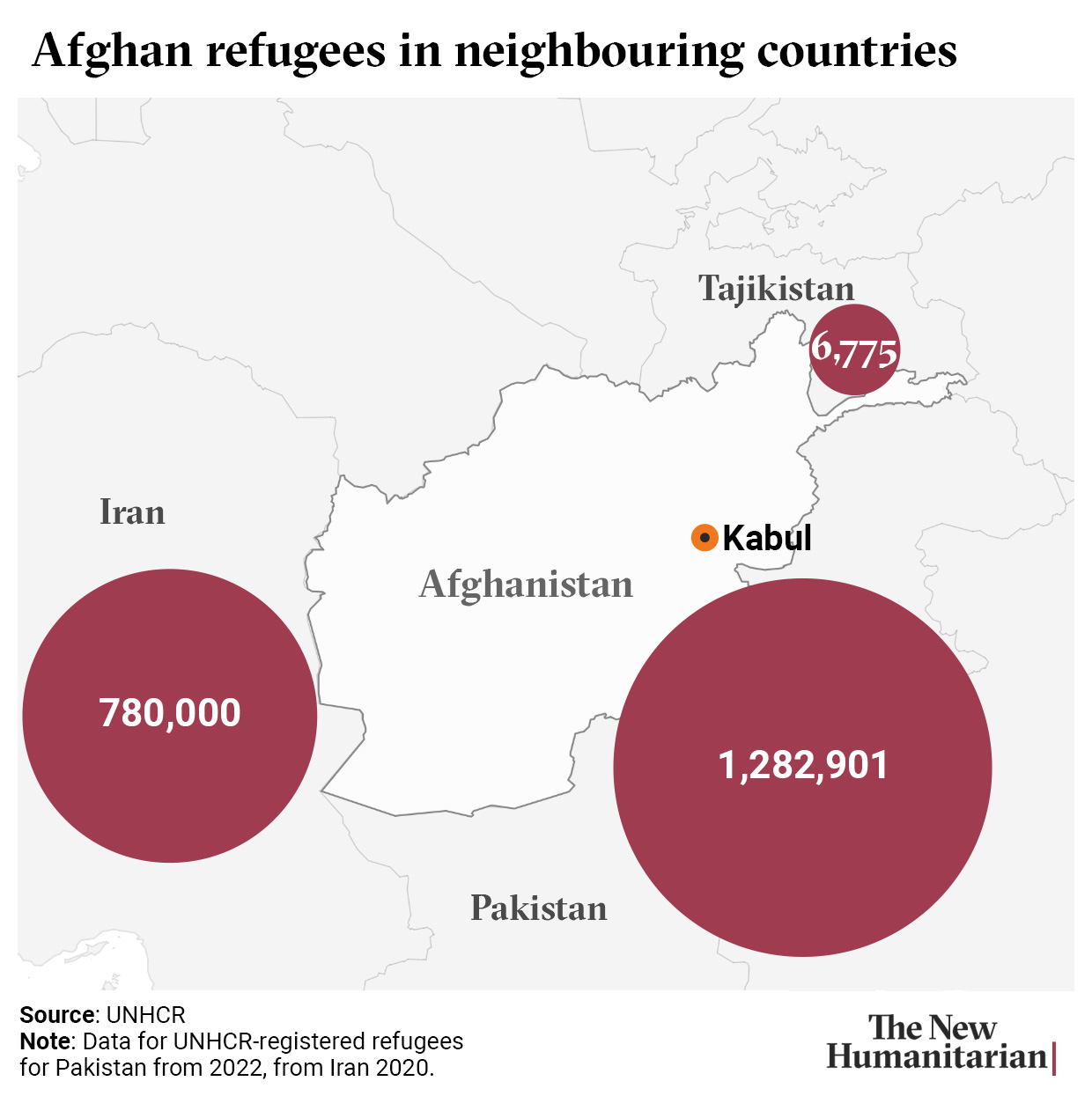Welcome No More!
November 11, 2023 | Expert Insights

An unprecedented crackdown on alien refugees (read Afghans) is taking place in Pakistan at the moment.
Faced with a notice of barely one month and a deadline of 31st October, one of the largest population shifts is again taking place in South Asia. Millions of Afghan citizens living in Pakistan, some for over three decades, have been issued notice to return to their country of origin or face consequences. Anchored by the all-powerful military, the original architect of Pakistan's Afghan policy, this threat cannot be taken lightly by any right-minded Afghan with shaky credentials to reside unmolested in Pakistan.
The impact of this potentially is on nearly two million people. The international community has strongly condemned this move, calling it a huge humanitarian disaster in the making. Both Western governments and human rights organisations have voiced their opposition. Kabul, caught by surprise by this abrupt turn of events, lacks the international leverage to stall the expulsion. Also, the rising terror graph in Pakistan's border regions allegedly perpetrated by Afghanistan-based, Taliban-armed and supported TTP have dried sympathy for the Afghan exiles living in Pakistan. This strengthens the hand of the caretaker government in Islamabad to relentlessly pursue this decision, comfortable in the knowledge that it has the blessings and unstinted support of the GHQ in Rawalpindi to take this massive exercise to its logical conclusion.
Background
Afghan refugees in Pakistan have quite a long history, stretching over almost four decades.
The porous Afghanistan-Pakistan border (despite a scraggly fence that is poorly policed) has helped in the flow of refugees through the years. Common Pashtun ethnicity on either side of the Durand Line has made assimilation of Afghans in Pakistan easy and hard to detect. Furthermore, the transplanted Afghans have acquired voter IDs and comprise a voting bloc for competing politicians, especially in Baluchistan and KPK provinces.
This has allowed the Afghan refugees to integrate easily into Pakistani society. Through the generations, they have set up deep roots within Pakistan.
The major refugee flow began when the Soviet Union invaded Afghanistan in 1979. At that time, both the Pakistani authorities and society welcomed them with open arms. That international aid agencies funnelled billions of aid dollars into the Pak economy was an added attraction.
Later on, this welcoming spirit slowly started to dilute, especially once the Soviets had been expelled and the world lost interest in the incessant internecine conflict that gripped Afghanistan. The U.S.-led invasion in 2001, which overthrew the first Taliban regime, led to another outflow of Afghan refugees to Pakistan. The latest refugee flow has been taking post-2021 when thousands who supported the Western coalition forces fled from Afghanistan, where they would have had to face medieval Taliban justice. Along with Iran, Pakistan became the country with the largest number of Afghan refugees in this period.
The international community has condemned this as a serious violation of human rights and a breach of globally established refugee conventions.

Analysis
The Pakistani government's action is not happening in a vacuum. Refugees have been used as a political tool in many other countries, and Pakistan is no exception.
When it suited Islamabad, the refugee card proved useful. From 1979 to 1989, the Afghan refugees were used to portray a positive image of Pakistan to the world. This was the image of a benevolent member of the Muslim Ummah, helping its Muslim brothers and sisters escape Kaffir oppression. The porous Duran Line presented little resistance to breaching, and corrupt border guards and customs officials on both sides closed their eyes for consideration. Once the refugees reached the sprawling Afghan-dominated ghettos of Karachi, Hyderabad and Lahore, seeking them out became near impossible, especially in the earlier decades when biometric-based identity cards were unknown.
Humanitarianism was not the only reason why Pakistan gave shelter to this initial flow of Afghan refugees; political and geo-strategic considerations have also played a key part here. The military significance of Afghanistan for Pakistan came into play here. The mujahideen forces fighting against the Soviet occupation of Afghanistan at the time were considered a strategic asset by the Pakistani military, which Rawalpindi felt could be leveraged to snatch Kashmir from India at a later date once things quietened down in Afghanistan. These rebel forces were receiving covert support from Pakistani intelligence agencies at the time, sustained by finances supplied by the U.S. and the rich Gulf nations. The refugee camps were ideal recruiting grounds for these insurgents.
Pakistan, especially its military, were confident that they could handle these Pak-based Afghans, but they were to rue their overconfidence later, as events unfolded. Not only did the Afghan war bring with it the 'Kalashnikov culture', but it also aggravated the already serious drug problem plaguing Pakistan's urban spaces. Crime charts spiked with a major contribution by the so-called 'undocumented Afghans.'
In August 2021, as Taliban forces marched into Kabul unopposed, Pakistan celebrated it as if it had won this victory, calling it the breaking of ‘shackles,’ the smugness of the expression not escaping the Americans already smarting from the ignominy. As Taliban 2.0 showed no sign of remorse or desire to change its stripes, the international community refused to recognise them, a situation that persists to date; as an international pariah, there are few doors open for the Kabul regime.
As hundreds of thousands of bedraggled Afghan citizens cross the Duran Line into their homeland, Pakistan's 'strategic depth' theory lies in tatters. No one in Pakistan, especially in GHQ Rawalpindi, talks anymore of the 'strategic depth' provided by 'brother nation Afghanistan' from arch-enemy India. Today, Pakistani media, both mainstream and social, is more anti-Taliban than even anti-India! There are some sane minds calling for restraint and greater tact, but they are in the minority and side-lined as 'anti-nationalists.’
The Afghans are clearly not taking it lying down, as has been demonstrated by the recent spate of ambushes and IED attacks on Pakistani security forces, including the daring attack on the Pakistan Airforce training establishment in Mianwali, Punjab.
Assessment
- With surprising rapidity, the decades-old benefactor-client relationship between Pakistan and the Taliban has dived South, highlighting the fickleness of strategic partnerships cobbled together in an unequal and subjective ecosystem with doubtful benefits for the junior partner. It also indicates the disruptive nature of the geopolitics dominating South Asia, with repercussions not confined to the two protagonists but to the larger region. India and other neighbours of Pakistan and Afghanistan must review their own options in this case carefully.
- More prudent elements are espousing greater restraint as Pakistan cannot afford to antagonise both its neighbours; it's a nightmare in the making for Pakistani security planners. Moreover, it is unfair to lay the blame for all of Pakistan's current ails, both political and economic, on the doors of the Afghan refugees.
- The international community needs to step in to redress this situation. Here, India should play a critical role along with the West, especially in providing humanitarian assistance to the refugees flung into the chaos of Afghanistan in the middle of a cruel winter.








Comments